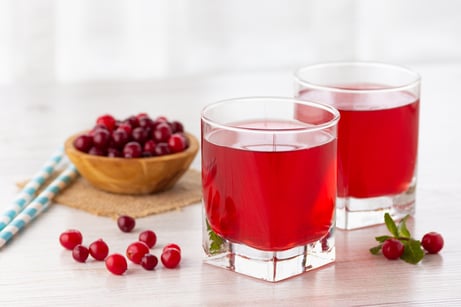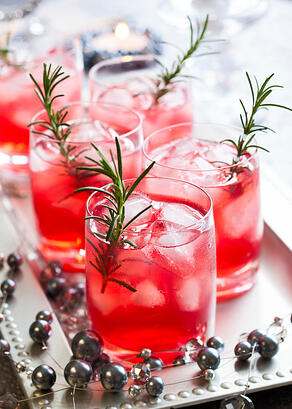 With the sport of powerlifting taking off in the last couple of years, more and more people are taking up the sport as a hobby and to improve their overall fitness levels. Training to improve strength in the squat, bench, and deadlift is a great way to improve total body strength and improve body composition.
With the sport of powerlifting taking off in the last couple of years, more and more people are taking up the sport as a hobby and to improve their overall fitness levels. Training to improve strength in the squat, bench, and deadlift is a great way to improve total body strength and improve body composition.
Some may argue that lifting heavy is unsafe and should be saved for the athletes. The common myth is that lifting heavy may lead to injuries. The movement most argued against is the deadlift. When performed too heavy with poor form, this may be true. However, when performed with the proper progressions, and the proper technique, the deadlift is the best total-body movement to improve strength, power, and body composition.
Why the Deadlift?
There are three main benefits to performing the barbell deadlift:
- First off, it is a whole-body movement. The deadlift works multiple muscle groups at the same time, offering more bang for your buck compared to isolation exercises.
- Secondly, the deadlift improves strength and stability. Because it is a compound exercise, working more than one joint, this lift can be performed with heavier loads, leading to greater increases in strength.
- Lastly, deadlifts can help improve posture. The muscles used while maintaining a flat back in the deadlift are the same muscles that help with sitting and standing up straight. The deadlift strengthens these muscles, leading to improved posture over time.
Now that we have gone over the benefits, let’s talk technique.
The Deadlift Setup
Follow these steps:
- Foot position: With your feet hip-width apart, the barbell should be placed over the center of your foot. An easy way to get the best foot placement is to look down, and move forward and backward until your shoelaces are directly under the bar.
- Grip: Without bending your knees or moving the barbell, bend over and grip the bar right outside of your legs. It is important that you do not move the barbell.
- Shins to the bar: Once you have your grip established, bend your knees and bring your shins to the bar. Do not over-bend them and push the bar away from you.
- Chest up and back flat: Without dropping your hips any further, puff up your chest and squeeze your shoulder blades together. By doing this, you will naturally flatten out your back.
- Drag: Take a big belly breath, hold it, and drag the bar up your shins. Keep your back muscles engaged and keep the bar close to your body the entire movement. When you let the bar get away from you, you have to compensate with your lower back, and this can lead to injury.
Keys to Success
Now that you have a safe setup, here are a couple of things to think about while performing the movement.
- On the last step of your setup, look out ahead of you. You do not want to overextend your neck, and you also do not want to be staring at the ground the entire time. Keeping your head in line with your spine will allow you to keep a neutral spine throughout the whole movement.
- When standing up with the barbell, your hips and shoulders should rise at the same time. If you allow your hips to come up first, the bar will get out in front of you, and like I mentioned earlier, you will have to compensate by pulling with your low back.
- Lastly, take a deep belly breath. A belly breath does not mean air all the way in your stomach, but what it does mean is filling your lungs all the way to the bottom to pressurize your core. A pressurized core equals engaged abdominals. When performing any lift, you want to create a solid core to help stay upright.
 If you are new to lifting and don’t know where to get started, come visit us at the Track Desk in the Fitness Center.
If you are new to lifting and don’t know where to get started, come visit us at the Track Desk in the Fitness Center.
This blog was written by Evan James, NIFS Exercise Physiologist EP-C, Health Fitness Instructor, and Personal Trainer. To learn more about the NIFS bloggers, click here.


 The traditional bodybuilding split of working one muscle group per day might work for the dedicated, high-level competitive bodybuilder who makes their living in the gym. But for the general population only looking to shed some unwanted pounds and improve their overall health, the traditional bodybuilding split is not ideal. Working multiple muscle groups in the same session is much more ideal because it ramps up the body’s metabolism more than working a single muscle group each day. To achieve this, we train the movement, not the muscles.
The traditional bodybuilding split of working one muscle group per day might work for the dedicated, high-level competitive bodybuilder who makes their living in the gym. But for the general population only looking to shed some unwanted pounds and improve their overall health, the traditional bodybuilding split is not ideal. Working multiple muscle groups in the same session is much more ideal because it ramps up the body’s metabolism more than working a single muscle group each day. To achieve this, we train the movement, not the muscles. Cranberries and cranberry-derived products are commonly used as a remedy for urinary tract infections, especially among women. Cranberries contain proanthocyanidins (PACs), specifically
Cranberries and cranberry-derived products are commonly used as a remedy for urinary tract infections, especially among women. Cranberries contain proanthocyanidins (PACs), specifically  Whether you’re a competitive athlete, a weekend warrior, or the casual gym-goer, addressing mobility concerns can go a long way toward performance enhancement and injury prevention. If a joint is unable to move through a complete range of motion unloaded, then it’s going to be “bad news bears” when it comes to putting that same joint under any external load. Eventually, limited mobility could lead to muscular imbalances and compensation patterns, which could ultimately lead to the onset of injury. In other words, you can’t look to build strength on top of dysfunction.
Whether you’re a competitive athlete, a weekend warrior, or the casual gym-goer, addressing mobility concerns can go a long way toward performance enhancement and injury prevention. If a joint is unable to move through a complete range of motion unloaded, then it’s going to be “bad news bears” when it comes to putting that same joint under any external load. Eventually, limited mobility could lead to muscular imbalances and compensation patterns, which could ultimately lead to the onset of injury. In other words, you can’t look to build strength on top of dysfunction. 




 I don’t know about you, but often during the holidays it just seems easy to blow off your daily workout. You have done well up to this point, staying committed and getting yourself into the gym or out for a run. But with the dark evenings, busy work schedule, and possibly some travel, it tends to be the first thing to take off the list. It’s important for your body to take a break, but if you need some tips on how to keep yourself going, keep reading!
I don’t know about you, but often during the holidays it just seems easy to blow off your daily workout. You have done well up to this point, staying committed and getting yourself into the gym or out for a run. But with the dark evenings, busy work schedule, and possibly some travel, it tends to be the first thing to take off the list. It’s important for your body to take a break, but if you need some tips on how to keep yourself going, keep reading! If your looking for a new challenge in the new year consider registering for the
If your looking for a new challenge in the new year consider registering for the 
 As an athlete there is no substitute for the ability to produce power and be explosive during your sport. From competitive weightlifters and NFL-caliber football players to distance runners, producing (and absorbing) high impacts is crucial for succeeding in your sport as well as staying healthy throughout your competition season. Are you incorporating any of these exercises into your current program?
As an athlete there is no substitute for the ability to produce power and be explosive during your sport. From competitive weightlifters and NFL-caliber football players to distance runners, producing (and absorbing) high impacts is crucial for succeeding in your sport as well as staying healthy throughout your competition season. Are you incorporating any of these exercises into your current program? Healthcare providers and scientists are all working diligently to find ways to prevent, treat, and cure COVID-19. Many of us are eager for answers and probably getting tired of not knowing what to believe. One of the hot topics floating around is about Vitamin D’s role in preventing COVID-19. Can Vitamin D really protect us against COVID-19 or at least lessen the effects? Let’s take a look.
Healthcare providers and scientists are all working diligently to find ways to prevent, treat, and cure COVID-19. Many of us are eager for answers and probably getting tired of not knowing what to believe. One of the hot topics floating around is about Vitamin D’s role in preventing COVID-19. Can Vitamin D really protect us against COVID-19 or at least lessen the effects? Let’s take a look. Vitamin D Recommendations
Vitamin D Recommendations Are you looking for a workout to strengthen and tone muscles without increasing bulk, but have not found anything that you like doing? Have you always wanted to increase your cardiovascular endurance and metabolism but hate doing regular old boring cardio? Well I might have an answer for you…
Are you looking for a workout to strengthen and tone muscles without increasing bulk, but have not found anything that you like doing? Have you always wanted to increase your cardiovascular endurance and metabolism but hate doing regular old boring cardio? Well I might have an answer for you…